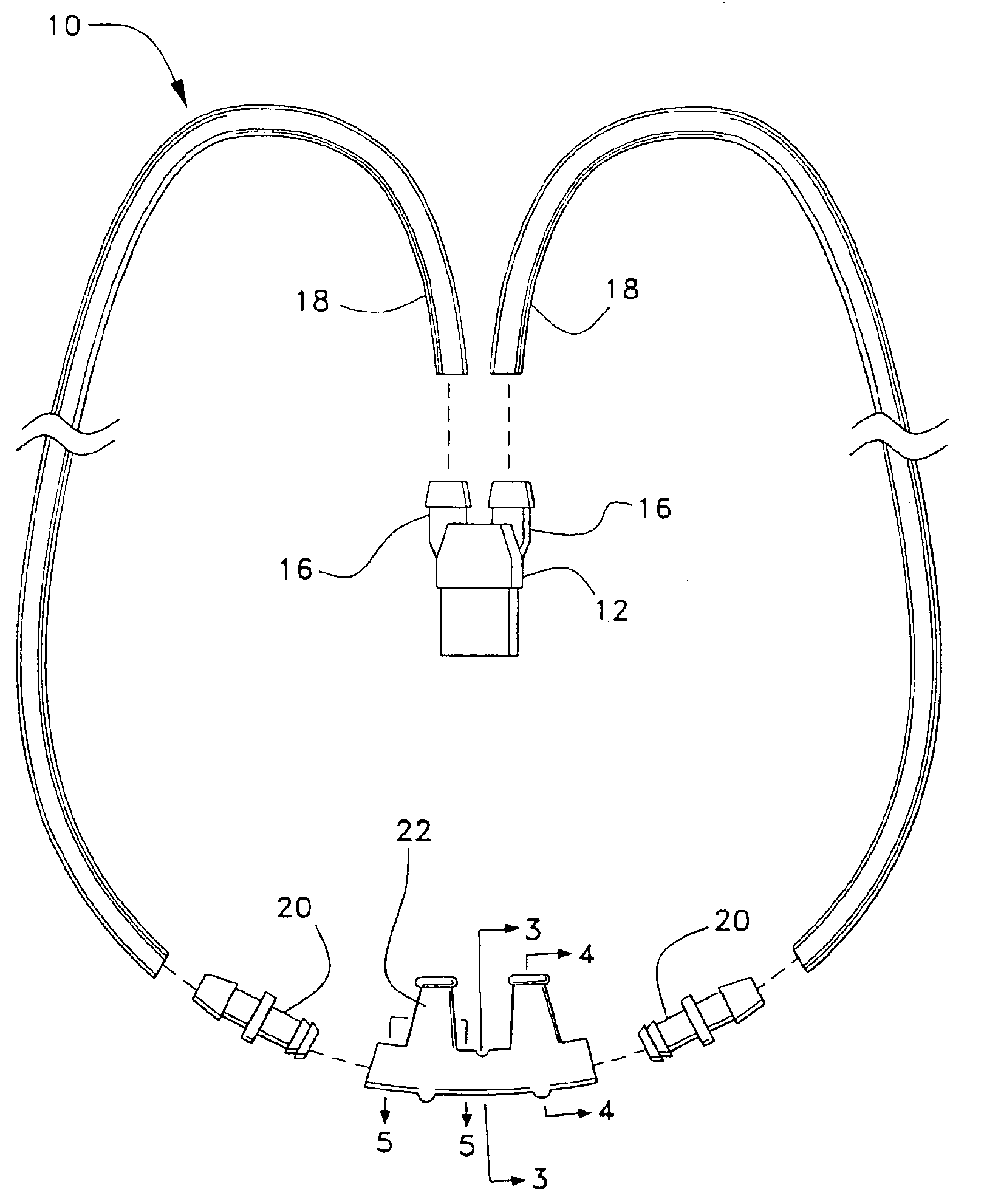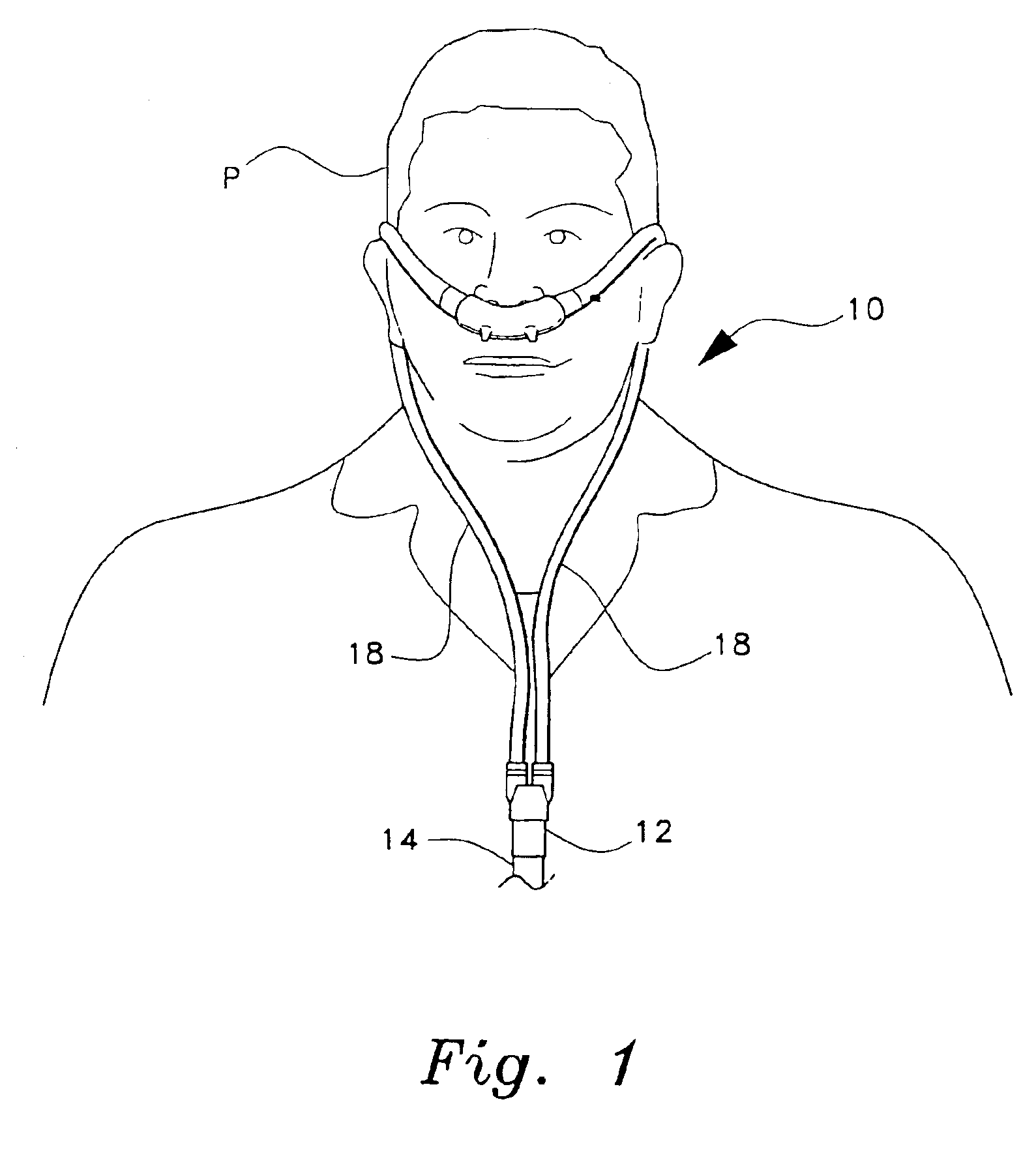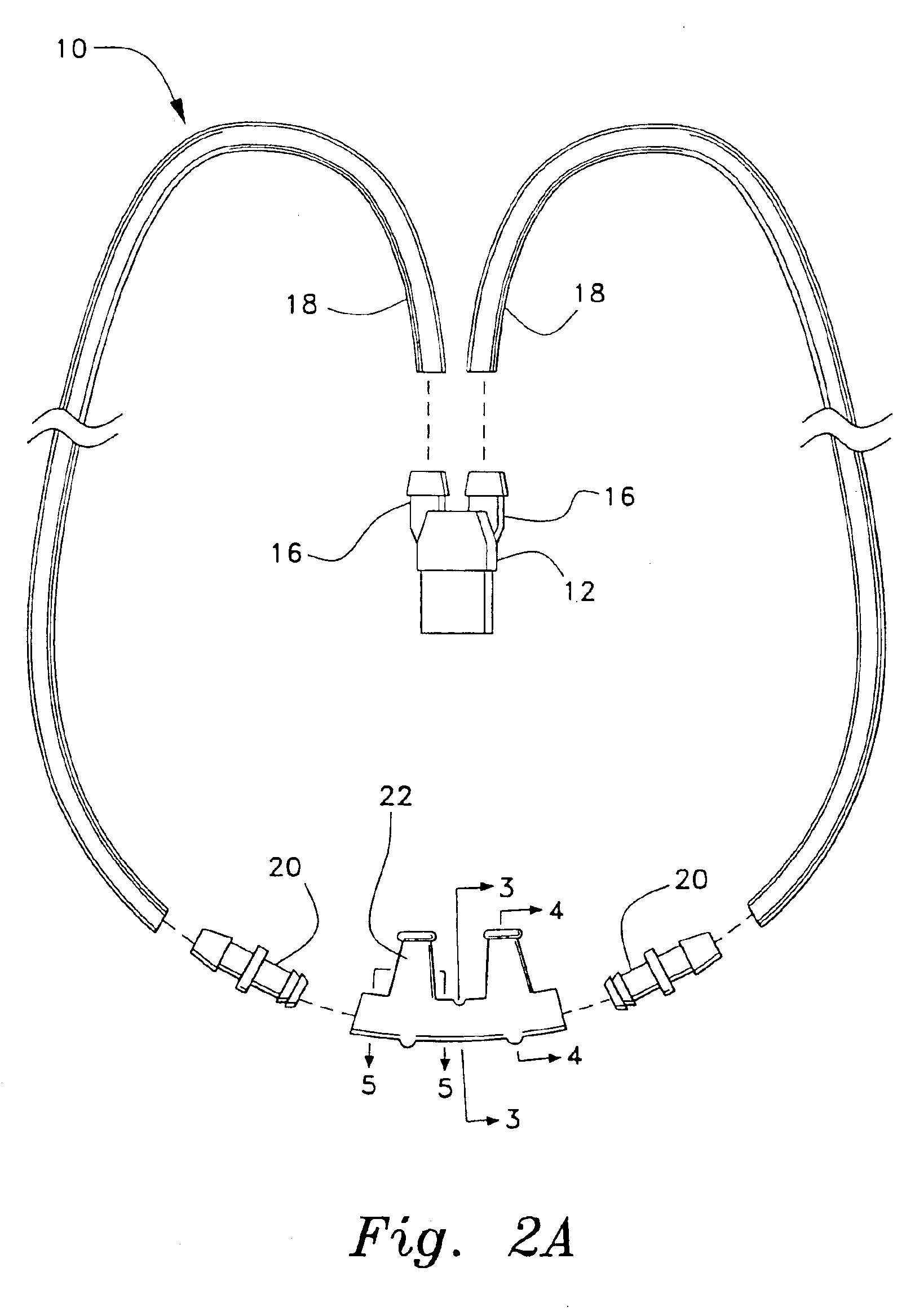Ventilation interface for sleep apnea therapy
a technology for sleep apnea and ventilation interface, which is applied in the field of ventilation interface for sleep apnea therapy, can solve the problems of affecting the patient's breathing, affecting the patient's physical and mental health, and affecting the patient's sleep apnea, so as to avoid drying and burning of the patient's nasal airways, and increase the internal diameter
- Summary
- Abstract
- Description
- Claims
- Application Information
AI Technical Summary
Benefits of technology
Problems solved by technology
Method used
Image
Examples
Embodiment Construction
[0043]The present invention is a ventilation interface for sleep apnea therapy, designated generally as 10 in the drawings. The ventilation interface 10 provides an interface for connecting a ventilation device which provides positive airway pressure (either continuous, bilevel, or intermittent) with the patient's airways. As shown in FIGS. 1 and 2A, the ventilation interface 10 includes a conventional adapter or Y-connector 12 having a first end adapted to receive a supply hose 14 from a mechanical ventilator (not shown) and a second end having a pair of ports 16 with barbed connectors for attachment to two supply tubes 18. Supply tubes 18 may be, e.g., 0.3125″ ID (inside diameter) flexchem tubing, made of polyvinyl chloride or other conventional gas supply tubing. For sleep apnea therapy, the mechanical ventilator will usually supply room air at a pressure of between five and fifteen centimeters of water. The room air may be supplemented with oxygen if desired by splicing an oxyge...
PUM
 Login to View More
Login to View More Abstract
Description
Claims
Application Information
 Login to View More
Login to View More - R&D
- Intellectual Property
- Life Sciences
- Materials
- Tech Scout
- Unparalleled Data Quality
- Higher Quality Content
- 60% Fewer Hallucinations
Browse by: Latest US Patents, China's latest patents, Technical Efficacy Thesaurus, Application Domain, Technology Topic, Popular Technical Reports.
© 2025 PatSnap. All rights reserved.Legal|Privacy policy|Modern Slavery Act Transparency Statement|Sitemap|About US| Contact US: help@patsnap.com



